Sabrestorm Publishing specialise in books on British history, fashion, and design, with a particular emphasis on the British Home Front and military history during the Second World War. As a small publisher, they strive to make their books a little more detailed and put that extra bit of effort into their design and production, giving their readers not only the facts they want but a colourful, enjoyable reading experience.
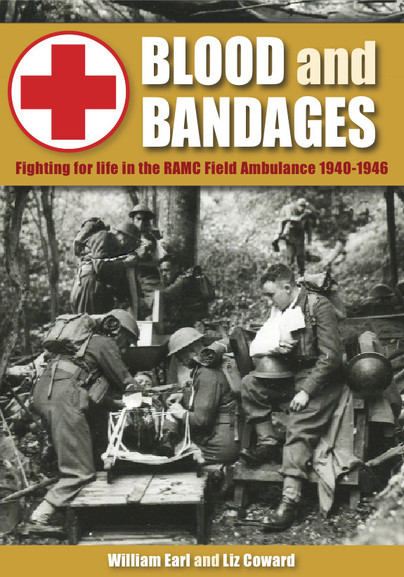
Format: Hardback
Pages: 160
ISBN: 9781781220085
Pub Date: 28 Apr 2017
Illustrations: heavily illustrated
Description:
War changes everyone and for those lucky enough to survive there can be no return to the carefree days before the hell of war broke out. William Earl was a 26 year old Chemist’s Assistant when his call up papers arrived and his life changed forever. Leaving a wife and new baby virtually alone to fend for themselves was a constant worry and circumstances grew worse as the years went by.
Joining the 214th Field Ambulance Royal Army Medical Corps as a Nursing Orderly William’s role was no soft posting. He was assigned to the Field Ambulance, so followed the infantry into battle to treat and recover the wounded, often under fire, before removing them from danger. Seeing action in North Africa and throughout the entire Italian campaign at places such as Salerno, Anzio and the Gothic Line William recalls his experiences in detail with the emotion of someone who lost many friends and was the last comforting voice to many a dying soldier. William is a charming, intelligent and independent man who will shortly be celebrating his 102nd birthday. Liz Coward has written his moving story with extracts from his letters home, original photographs, training manuals and official war diaries. Blood and Bandages is a very personal, honest and moving account of one man’s life over 6 years of war. A war which left William asking the guilty question on many a soldier’s lips: “Why did I survive when so many of my friends didn’t?”
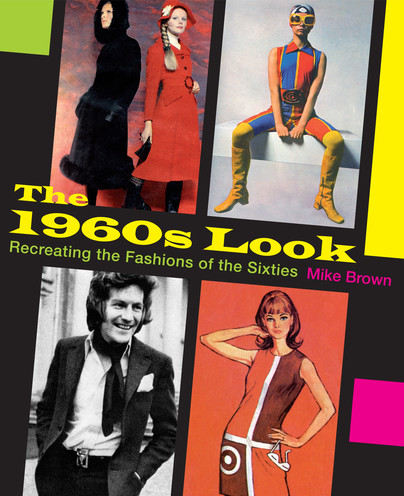
Format: Paperback
Pages: 144
ISBN: 9781781220078
Pub Date: 30 Sep 2016
Illustrations: many photographs, colour throughout
Description:
The 1960s, known as the ‘Swinging Sixties’, are recognised as a landmark decade both by those who lived through them and those who look back in awe at the revolutionary changes in fashion, style and sexual freedom.Continuing interest and appreciation of vintage fashion mean that 1960s styles, hair and make-up have seen a huge increase in popularity and the need for detailed information on this period has never been so great.The ‘Swinging Sixties’ saw young designers such as Mary Quant producing exciting new clothes modelled by the likes of Jean Shrimpton and Twiggy.
New clothing styles were created – like the miniskirt – and new materials came to prominence including PVC and Perspex.But achieving the ‘1960s Look’ is not just about the clothing but also the hairstyles, make-up, shoes, and many other accessories, all of which Mike Brown covers in detail.Using contemporary sources, photographs and meticulous research ‘The 1960s Look’ walks you through the decade telling you how men, women and children dressed - and why they looked the way they did.Lavishly illustrated throughout this book takes you back to a decade of fab miniskirts, groovy Beatles’ jackets, swinging Edwardian military uniforms, Mods in parkas and Rockers in leathers, plus the hairstyles, jewellery, make-up, and so much else that went to make up ‘the 1960s look’.

Format: Hardback
Pages: 240
ISBN: 9781781220061
Pub Date: 27 Sep 2016
Illustrations: many photographs, colour throughout
Description:
Fighting for the Empire is the story of a remarkable Irishman, a staunch Catholic from Galway who served the British Crown and its Empire for almost fifty years. His extraordinary military career took in countless conflicts including two World Wars, Imperial adventures, acts of heroism and encounters with royalty. It also included a period of Irish history that split families and communities in two.
Joining the Indian Medical Service in 1896 Thomas Kelly was posted to the turbulent North West Frontier almost as soon as he arrived in India. He was one of the first Westerners to set foot in the mysterious mountain city of Lhasa, winning a commendation along the way for an act for bravery that was illustrated on the front page of London newspapers. Kelly’s many adventures brought him face to face with both hardships and glamour. His duties included entertaining Swedish Explorer Sven Hedin, King George V and later the Prince of Wales (later Edward VIII) who he despised, describing him as a drunkard and a womaniser. The First World War saw Kelly serving with the Indian Medical Service in Aden, Egypt and Mesopotamia (covering present-day Iraq, Syria, Iran and parts of Turkey), collecting the Distinguished Service Order as well as being commended in dispatches four times, including for his role in the aftermath of the infamous siege of Kut. The end of the First World War saw no letup as he was pitched into the brief and bloody 3rd Afghan War that raged across the notorious North West Frontier in 1919. Bitterly disappointed at being turned down by the Royal Navy at the outbreak of the Second World War (he was now 69) Kelly became ships surgeon in the Merchant Navy taking part in the evacuation of the British Expeditionary Force from Bordeaux as France fell to the German invaders. Going with the 8th Army to Egypt and serving on Atlantic convoys his service finally came to an end in late 1944 after serving on ships transporting troops for the invasion of Europe. His age (74) caught up with him and he was sent home still protesting that he was more than fit enough to remain at sea. Containing many photographs from Kelly’s personal albums and private collections Fighting for the Empire is a fascinating book not just at an individual’s bravery and hardships but at the closing years of the British Empire.
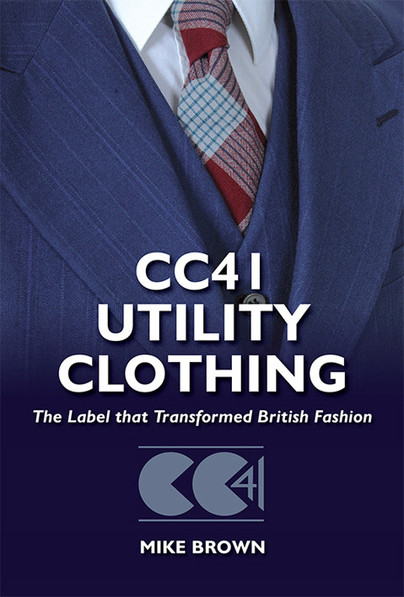
Format: Hardback
Pages: 128
ISBN: 9781781220054
Pub Date: 20 Nov 2014
Illustrations: full colour throughout
Description:
The Utility symbol, CC41, is one of the most iconic symbols in the history of clothing in Britain; instantly recognisable to anyone who lived in Britain through the Second World War or the immediate post-war years. Clothes rationing began in June 1941 in an effort to cut down the nation's consumption of scarce resources; the Utility scheme was started 3 months later as a method of providing cheap, but well-made clothes for the less-well-off. The scheme was such a success that over the next few years it was extended to cover goods as widespread as shoes, furniture, lighters, pencils and household linen.
Mike Brown looks at the background to, and the evolution of, the clothing scheme and the symbol as it changed to include more items of clothing, from underwear to fur coats. He also addresses the often misunderstood subject of 'Super Utility', and the so-called 'Dinner plate' mark, uncovering the truth behind a subject shrouded in mystery since its introduction. From somewhat hit-and-miss early garments, through to 'the Couturier scheme', the Utility symbol grew to be a mark of quality and value, which, post-war, slowly deteriorated until many were removed from clothes as a symbol of 'cheap and cheerful', and often not even cheerful clothes. A fascinating explanation of a little understood scheme with a wealth of knowledge complimented by colour photographs and original illustrations throughout.

Format: Paperback
Pages: 240
ISBN: 9781781220047
Pub Date: 27 Mar 2014
Illustrations: full colour throughout
Description:
This book provides a unique insight into one of the most important days in World history, the World's greatest ever seaborne invasion - June 6th 1944 - D-Day. Drawing upon four decades of research and two decades of working the battlefields as the region's foremost guides, the authors use a compelling combination of background narrative and first-hand accounts provided exclusively to them by many veterans. This comprehensively illustrated book serves as an essential accompaniment to any visit to the region, includes directions of how to find the important sites, what to see during a visit to the battlefields, and how to discover the lesser known areas only familiar to those with an intimate knowledge of the area.
To be used as a history book or as a guidebook for visitors to the battlefield, 'Following in the Footsteps of Heroes' will touch every reader and provide to those who previously knew nothing of the subject or those who have previously studied it in depth, a new perspective into one of the greatest military feats ever achieved. Historical reference and essential guidebook. Comprehensively illustrated with over 240 photographs and maps. Written and researched by the regions foremost battlefield guides. Includes exclusive first-hand accounts by D-Day veterans. All author royalties donated to two charities which help maintain Normandy battlefield sites.
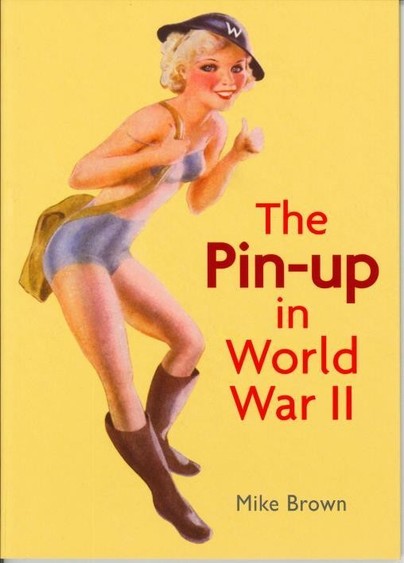
Format: Paperback
Pages: 64
ISBN: 9781781220023
Pub Date: 10 Jun 2012
Illustrations: colour throughout
Description:
With the advent of the World War ll, millions of men were torn from their homes and plunged into the impersonal surroundings of the barrack room. They took with them a few personal belongings to remind them of home, and to make their 'space' a little more welcoming. These included photos of loved ones and of course, pin-ups.
These might be photographs or illustrations cut from popular magazines, or some of the many postcards then on sale. Using examples from British and overseas magazines, posters, postcards and nose-art from the period, this book gives a flavour of the many delights available to the servicemen. Author Mike Brown, an authority on the period, has researched deeply in archive sources to bring together a fascinating selection of photographs, picture postcards, artworks and drawings of beautiful women in beguiling poses. Ranging from tasteful nude portraits to the erotically charged paintings of artists like Alberto Vargas and the whimsical humour of Norman Pett's Jane, this book provides a wonderfully evocative vision of an age gone by.

Format: Paperback
Pages: 160
ISBN: 9781781220009
Pub Date: 06 Jun 2012
Illustrations: colour throughout
Description:
Parachute Doctor is the story of Captain David Tibbs RAMC MC who as a member of 225 (Parachute) Field Ambulance and the 13th Parachute Battalion served with the 5th Parachute Brigade of the famous 6th Airborne Division. His fascinating recollections feature jumping into Normandy on D-Day and the subsequent intense battle to defend the Airborne perimeter; assisting the Americans in repulsing the Ardennes offensive, the massive Airborne drop across the Rhine and the rapid advance to the Baltic to prevent the Russians moving into Denmark. Following the end of the European war, the Brigade was shipped to the Far East for a proposed invasion of Singapore.
However, the Japanese surrendered beforehand, and the Paras ended up being involved in a little known episode, fighting alongside the Japanese in defence of Dutch civilians against violent rebels on the island of Java.
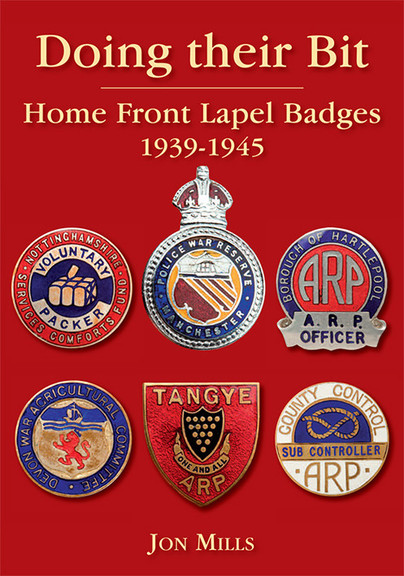
Format: Hardback
Pages: 288
ISBN: 9780955272394
Pub Date: 09 May 2012
Illustrations: colour throughout
Description:
The Second World War, often described as a "People's War", was the first time civilians played a major part in Britain's war effort. New emergency services created before the war to help those suffering loss and damage were joined by the Home Guard as Britain faced invasion in the summer of 1940 and new organisations formed to deal with unexploded bombs and the homeless caused by nightly air raids in 1940. Major air attacks ceased in 1941 but food was rationed, daily essentials scarce and Britons of all ages expected to do wartime duty in addition to their day job.
Many essential war workers on the Home Front lacked a uniform but wore a lapel or pin back-badge to show they were doing their bit for the war effort. Treasured as souvenirs of six momentous years in Britain's history, they were rediscovered years later, often by someone to whom their significance and meaning was unknown. Whilst military badges are well recorded, no attempt to identify Home Front items was made until the first edition of this book was published privately in 1996. Extensively updated Doing Their Bit is illustrated with over 700 wartime lapel badges and ephemera, records the wartime history of over 200 organisations which wore them and shows how Thomas Fattorini Ltd became a major manufacturer of Home Front badges. This invaluable guide should be on the shelves of anyone with an interest in the history of wartime Britain.

Format: Paperback
Pages: 64
ISBN: 9781781220016
Pub Date: 01 May 2012
Illustrations: Highly illustrated
Description:
Containing over one hundred and twenty photographs of Dunton Green from the last one hundred years, this book allows you to step back into the past and visit the place where villagers worked with their hands digging clay for bricks and where they later froze food for other people's tables. It invites you to sit in the sun by the Lido or to take a dip in its cold clear waters, marvel at a motorcar that ran on rails, and even discover a place so secret that it never appeared on any map! With an introduction from Fergus Anckorn, a celebrated war hero who himself grew up in Dunton Green, wonderful photographs and informative text, this book not only shows the village through the years but tells you some of its history.

Format: Hardback
Pages: 216
ISBN: 9780955272363
Pub Date: 10 Oct 2010
Illustrations: colour throughout
Description:
Contrary to the Hollywood-style romanticism of popular novels and films, the Second World War was more than courage on the battlefield, plucky defiance and doomed love affairs. Family and civilian life had to go on. In the midst of black-outs, road-blocks and austerity, households had to feed and clothe themselves, to travel, to decorate and furnish their homes.
In this meticulously researched and lavishly illustrated account, Mike Brown and Carol Harris draw on contemporary sources including government advice, periodicals and books to provide an authoritative, entertaining account of life in the time of air-raid sirens and rationing.

Format: Hardback
Pages: 216
ISBN: 9780955272370
Pub Date: 10 Oct 2010
Illustrations: colour throughout
Description:
Beans as bullets', 'Vegetables for Victory' and 'Cloches against Hitler': these slogans convey just how vital gardening and growing food were to the British war effort during the Second World War. Exhorted to 'Grow More Food', then to 'Dig for Victory', Britain's 'allotment army' was soon out in force, growing as many vegetables as possible in suburban allotments, private gardens, even the grounds of stately homes. Richly illustrated with contemporary photographs and ephemera relating to the 'Dig For Victory' campaign, this expertly researched, highly engaging and informative account also includes archive images of home front gardening, garden produce and advertisements.
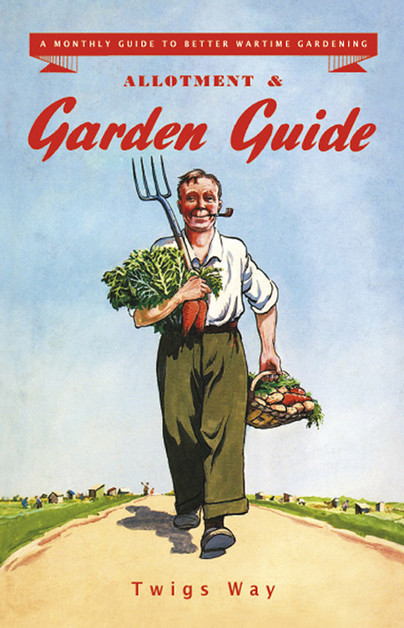
Format: Hardback
Pages: 160
ISBN: 9780955272356
Pub Date: 01 Dec 2009
Illustrations: colour throughout
Description:
Produced by the Ministry of Agriculture, the "Allotment and Garden Guides" were issued monthly throughout 1945. Aimed at the amateur gardener, they were to be the final rallying call in the wartime campaign to Dig for Victory. Concentrating on the productive garden, the guides were designed to take the amateur gardener through the basic tasks of each month.
Many of the subjects tackled are as relevant now as they were then. How to make a compost heap, when to sow marrow seed, which seeds are they easiest to save, are still popular topics in the modern gardening media. However, other subjects convey the war-time difficulties: seed shortages due to enemy occupation in Europe, regulations on flower growing, and the very real prospect of running out of food next winter. Packed with additional photographs and illustrations, Twigs Way gives an historical overview to gardening during the Second world war and comments on each month of the guide. Many people still work allotment or vegetable plots that were first established during the war years, 'inheriting' them from a generation that used these guides as their gardening bibles. To read the Guides now is to experience a sense of both the urgency of the war-time garden, and the timelessness of the processes of gardening.

Format: Hardback
Pages: 35
ISBN: 9780955272325
Pub Date: 10 Jun 2008
Illustrations: colour throughout
Description:
When the Luftwaffe's Blitz on Britain began in September 1940, people's homes and their contents were destroyed at an alarming rate. Thanks to the bombing, furniture shortages in Britain hit an all time high by 1942. The government responded with a range of affordable furniture - the so-called Utility Furniture Scheme - but only for those that could prove their need.
Jon Mills presents a comprehensive guide to the introduction of utility Furniture, to accompany a facsimile reproduction of the first Utility catalogue that appeared in 1943. Jon Mills gives a fascinating insight into the privations of the war years and a nostalgic look back for those who remember this sturdy furniture, much of which has survived into the 21st century.
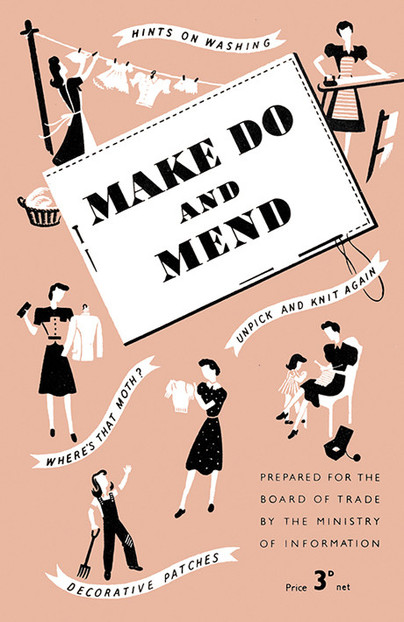
Format: Paperback
Pages: 32
ISBN: 9780955272349
Pub Date: 10 Jun 2007
Series: Historic Booklet Series
Illustrations: B/W illustrations
Description:
Prepared for the Board of Trade by the Ministry of Information in 1943, this publication gives the hints and tips needed to make clothing last longer at a time when rationing and severe shortages meant that the average household were unable to replenish their worn out wardrobe. The 'Make Do & Mend' campaign was intended to help get the last possible ounce of wear from clothing and household items and the hints in this book were tested and approved by the Board of Trade Make Do and Mend Advisory Panel, a body of practical people, mostly women. The book aimed to help you: to keep clothes looking trim as long as they had to last; to renovate children's outgrown clothes so cleverly that none is ever wasted; to turn every scrap of good material possessed to advantage; to keep household linen in good repair; and, to make do with things you already had instead of buying new.
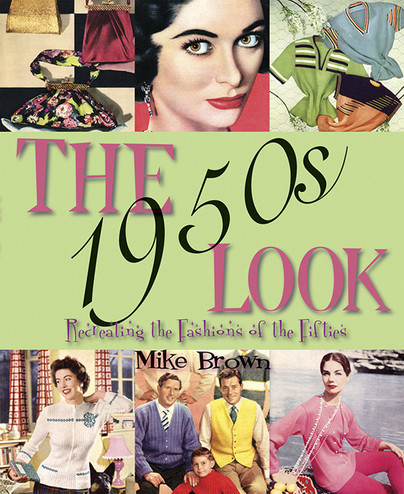
Format: Paperback
Pages: 136
ISBN: 9780955272332
Pub Date: 10 Oct 2006
Illustrations: colour throughout
Description:
This is a book sure to delight designers, social historians and anyone with an interest in this style-defining decade. "The 1950s Look: Recreating the Fashions of the Fifties" takes the reader on a tour of the trends and signature styles of the era - from Audrey Hepburn chic to high school prom queen. Moving forward a decade from his successful book "The 1940s Look", Mike Brown deconstructs the key elements of iconic 50s fashions, as well as shedding light on the origins of many items of clothing now taken for granted on today's high street.
Over 144 pages, with more than 300 full colour photographs and pictures, readers can learn about the new synthetic wonder fabrics, the Trapeze dress and the Teddy Boys' quiff, pedal pushers and drain pipe trousers. Prime Minister Harold Macmillan famously summed up the mood of the fifties when he told the country: 'you've never had it so good'. Cinched waists and full, layered skirts celebrated femininity and the availability of luxurious fabrics after the restrictions of the previous decade. The success of fashion houses such as Dior signalled the rise of chic Italian and French styling, and this was the decade that denim jeans arrived in the UK from the USA. An eclectic British style began to emerge from these influences, and with it a whole new breed - the teenager. Author Mike Brown says: 'The 1950s was a decade of decadence - a rebellion against wartime restrictions and rationing. As people turned their backs on the privations of the drab war years, exciting new fashions and daring styles from overseas found a place in British homes. In the decade of the Coronation, the conquest of Everest and the Festival of Britain, the second Elizabethan age had arrived, and with it came optimism for a bright future'. Meticulously researched and lavishly illustrated, this retrospective is essential reading for anyone interested in social history, fifties design, and those that look back fondly at the 1950s. Chapters of this title include: formal and informal fashions; couture house to homemade; hairstyles and make-up; the figure; and, accessories.

Format: Paperback
Pages: 16
ISBN: 9780955272301
Pub Date: 31 Mar 2006
Description:
The 'friendly invasion' of American servicemen (and women) began in 1942 and by 1945 around three million had passed through the United Kingdom. With money in their pockets, a smart uniform, and access to goods the British housewife hadn't seen in the shops for many years they were generally popular but resented by some. The phrase 'Over-paid, over-sexed, and over here' being used to describe them in less than complimentary terms.
This booklet was issued to American forces in an attempt to get them acquainted with the British, their country, and their ways, and avoid some of the more obvious misunderstandings that could easily occur without at least a little knowledge of the strange and wonderful British customs. Covering a diverse range of subjects such as, customs & manners, sports and pastimes, history and language, as well as some important do's and dont's, it is a delight to read and goes to show that some things haven't changed that much in the last 60 years since this was originally produced.

















